Abstract
This report contains a field visit to a local fish market, Mirpur-1 and fish arat of Diyabari, Dhaka.
As there are tons of rivers in Bangladesh and the country stands on the Bay of Bengal, fish are very available here. Fish are very diverse and can be categorized in many ways. This article is an overview of the stakeholder’s roleplay with the fish in Mirpur 1 local fish market and Diyabari Fish Arat. This paper attempts to identify infrastructure facilities, present market structure, nature of costs, profit margins, marketing cycle from the fishermen to the consumers, and the factor influence the marketing system. In Mirpur 1 local fish market, almost all kinds of fishes are traded internally move through the privet sector where a large number of people are dealing with fish distribution and marketing system. There are two types of marketing chain, one is for the fishermen who catches fish from the rivers or Bay of Bengal and the other chain is for the producers who produce fish in the ponds. For the first chain, the fishermen catches fish from the rivers and the Bay of Bengal, then these fish are collected by either beparies or mahajans. If the fish is collected by the beparies, they sell the fish to the mahajans. The mahajans distribute the fish to the aratdars of different cities. Aratdars collect the fish from the mahajans and sell them to the wholesellers or retailers. The consumers buy fish from the retailers. For the second chain, the producers, who produce fish in the ponds or fisheries, directly sell their fish to the mahajans or aratdars or wholesellers or retailers. The producers prefer the best profit margin but the fishermen are forced to sell their fish to the beparies or mahajans if they receive “dadon” from them. There are almost all kinds of marine, river or pond fishes are present in the local market of Mirpur 1 and the arat of Diyabari. Fish from south, west, north and north-east Bangladesh come here. It is estimated that near about 15% of fish supplied in markets is Indian major carps, 10% exotic carps, 5% other carps, 25% hilsa, 10% catfish, 5% snake-heads, 3%live-fish, 5% small indigenous fish, 7% prawn and shrimp, 5% tilapia and 10% others including small chingri and marine fishes. A great amount of profit is made by all traders in the market in a successful manner.
Acknowledgement
I would like to express my deepest appreciation to all those who provided me the possibility to complete this report. A special thanks to our honorable Dr. Anirban Sarkar, Dr. Habibon Naher, Masud Rana and Amir Hossen whose contribution in stimulating suggestions and encouragement helped me to coordinate my report especially in writing this report. Furthermore, I would also like to acknowledge with much appreciation the crucial role of the staff of Md. Taleb Mia who gave me the permission to use all required equipment and the necessary materials to complete the task “Field visit to a local fish market”. I have to appreciate the guidance given by other supervisor as well as the panels especially in our project presentation that has improved our presentation skills thanks to their comment and advices.
Introduction
In the agro-based economy of Bangladesh, the fisheries sector contributes near about 58% of animal protein to the daily diets of the population, about 3.74% to GDP, 4.04% in export earnings and 20.87% to agriculture in 2007-08, (DOF, and Ministry of Fisheries & Livestock). Fish and fishermen play an important role in the nutrition, economy, employment and culture of Bangladeshi people. As Bangladesh is a riverine country and it stands on the Bay of Bengal, fish is so available here and in fact it is the second staple food for the Bangladeshi people. The diverse aquatic habitats in Bangladesh support a wide variety of fish. Fish for local consumption are generally of freshwater varieties. According to FAO, Bangladesh has been among the top five fish cultivation countries for many years.
Study Area
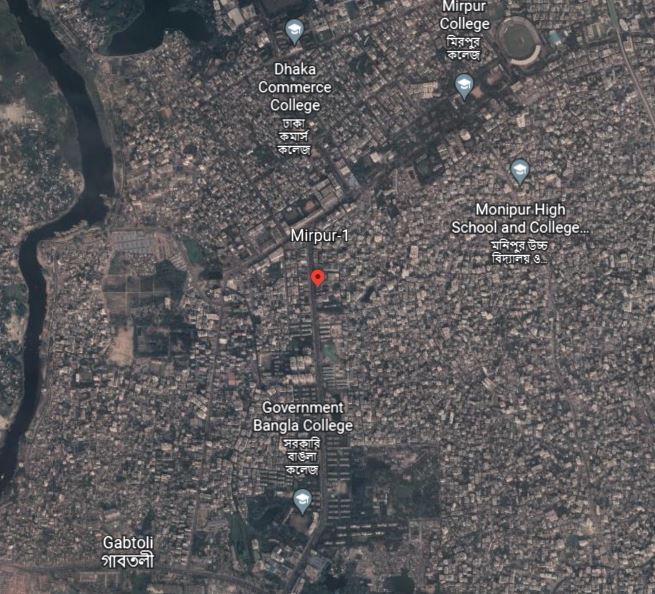
Photo : Study area 1 : Mirpur 1, Dhaka
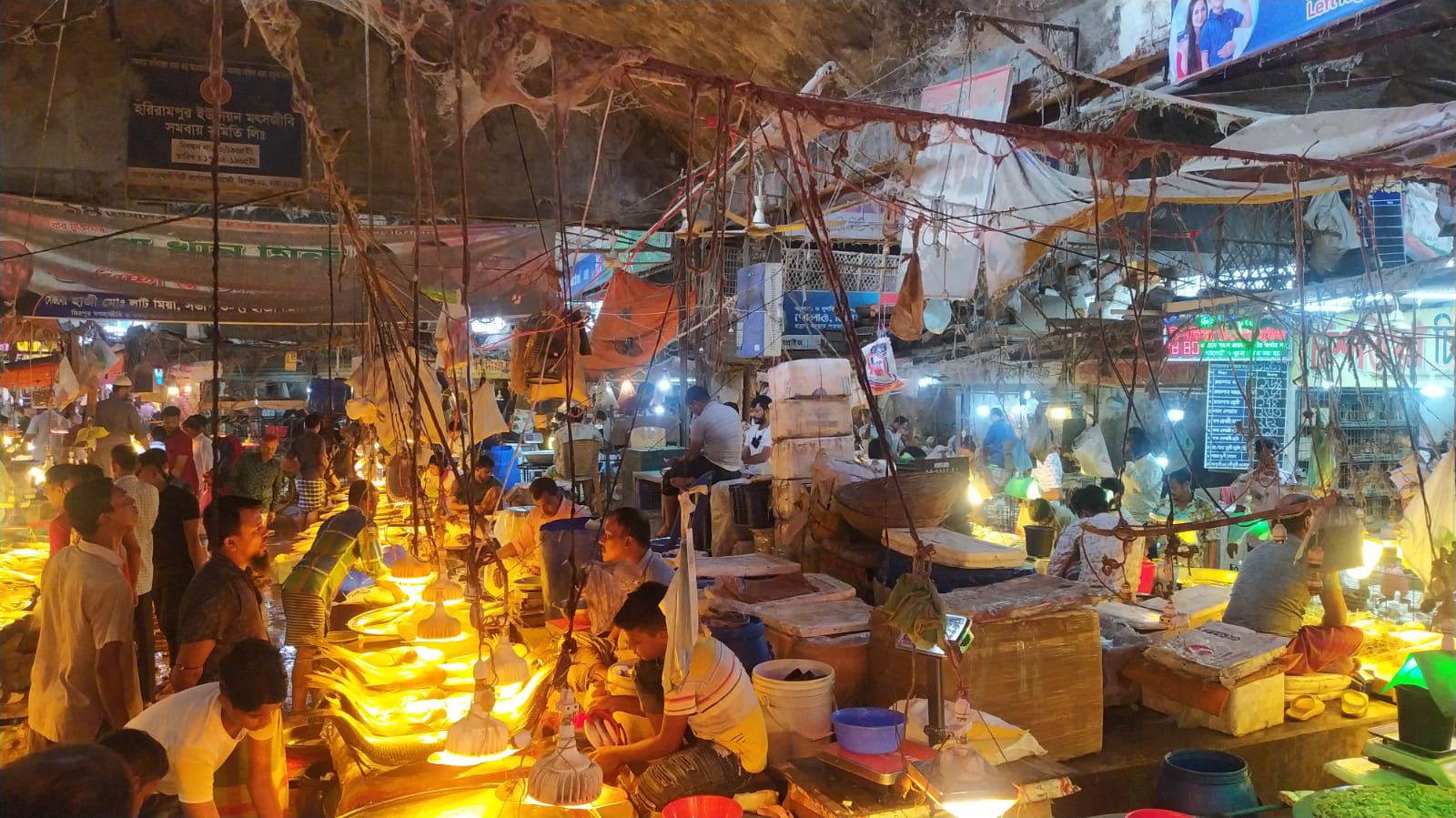
Photo : local fish market mirpur 1, Dhaka
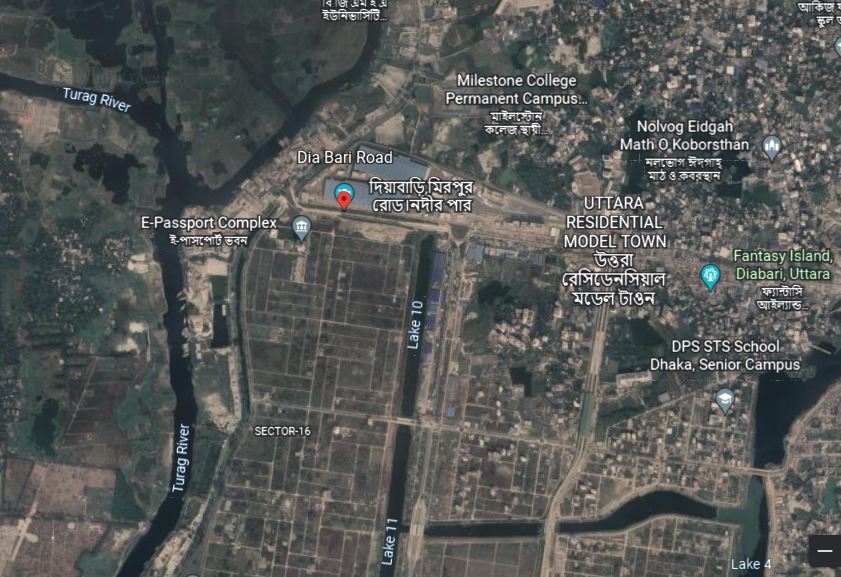
Photo : Study area 2 : Diya Bari, Uttara, Dhaka.
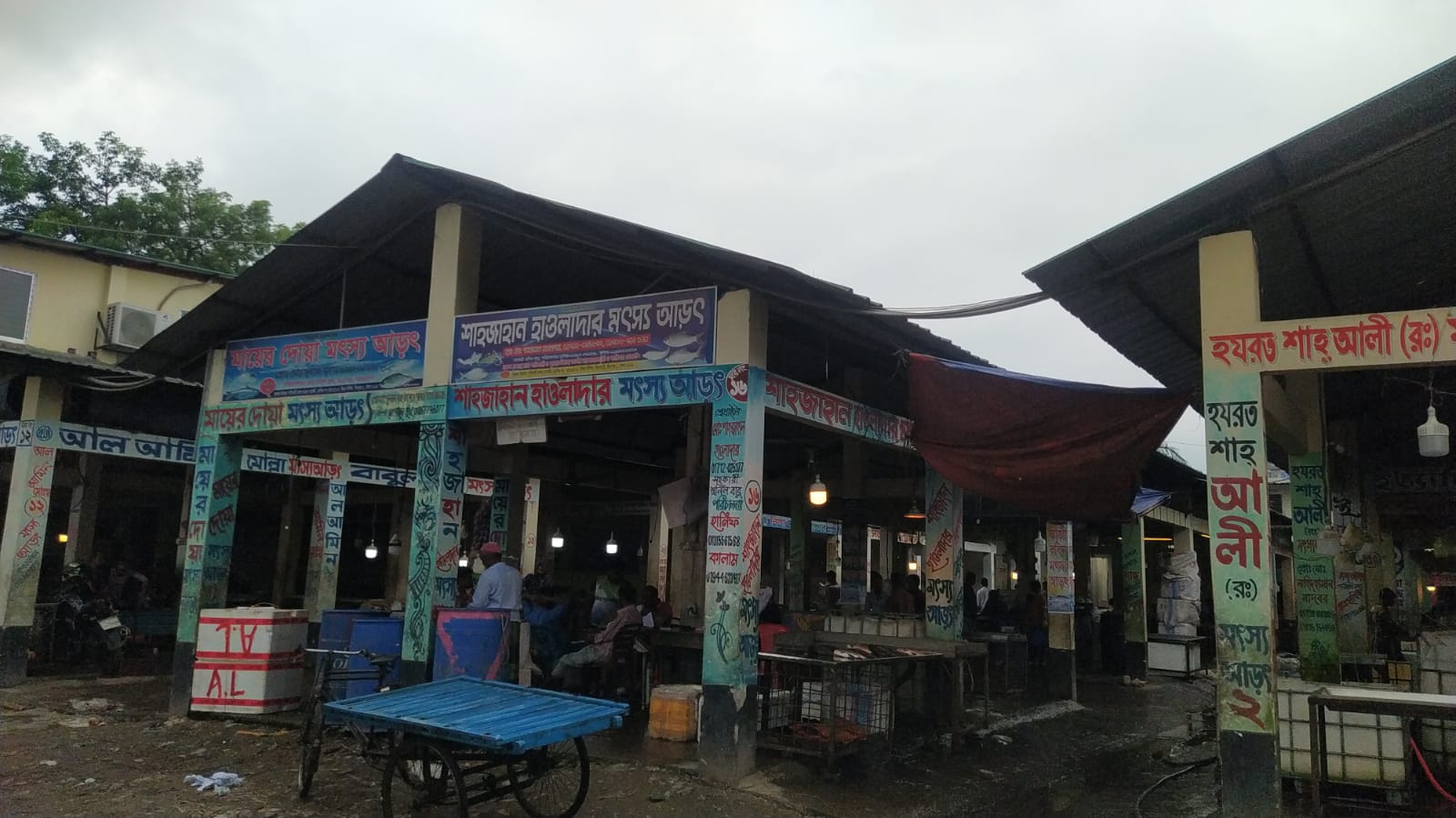
Photo : Local Fish Arat, Diya Bari, Uttara, Dhaka, Bangladesh
Methods and Materials
Methods: The data was gathered over one day on 21th September, 2022. The study site were Mirpur 1 and Diyabari, located at the north part of Dhaka city. The both site are common, old and well known fish market in the city. Field surveys were used for the collection of primary data. The study area were visited officially to check on standards in term of fish distribution and marketing information. By using questionnaire interviews and direct observations, primary data were gathered for this survey. Our team first visited Mirpur 1 local fish market. First we visited the whole market. Then we took interview of some retailers and wholesalers. We took data from them and observed all the fishes. Then our team visited the Diyabari Fish Arat. First we visited the whole arat and then took interview of some aratdars.
Materials : The following materials are used during the study period:
- Data sheet
- Mobile camera
- Paper and pen
Photo Gallery
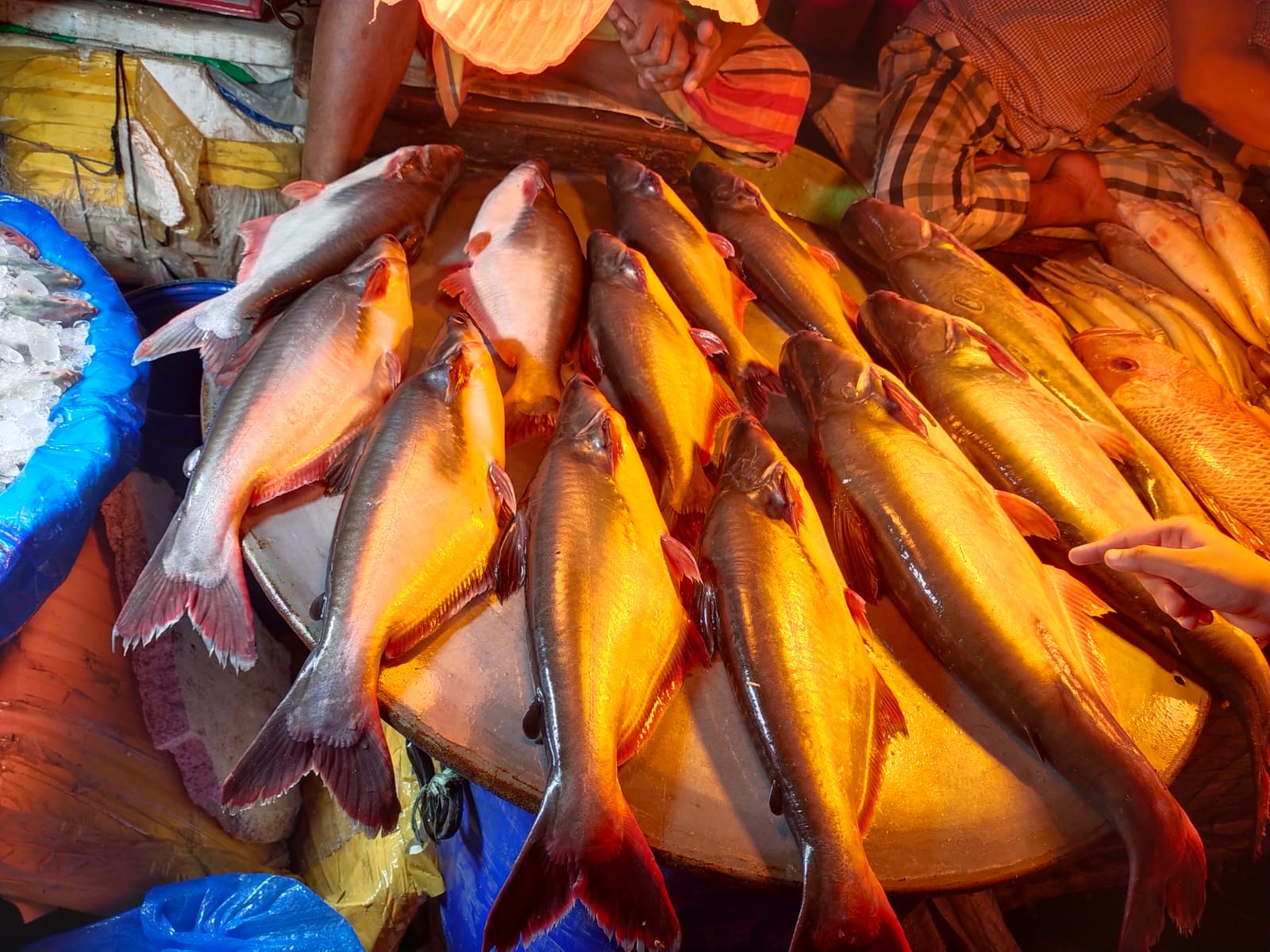
Photo: Pangasius catfish
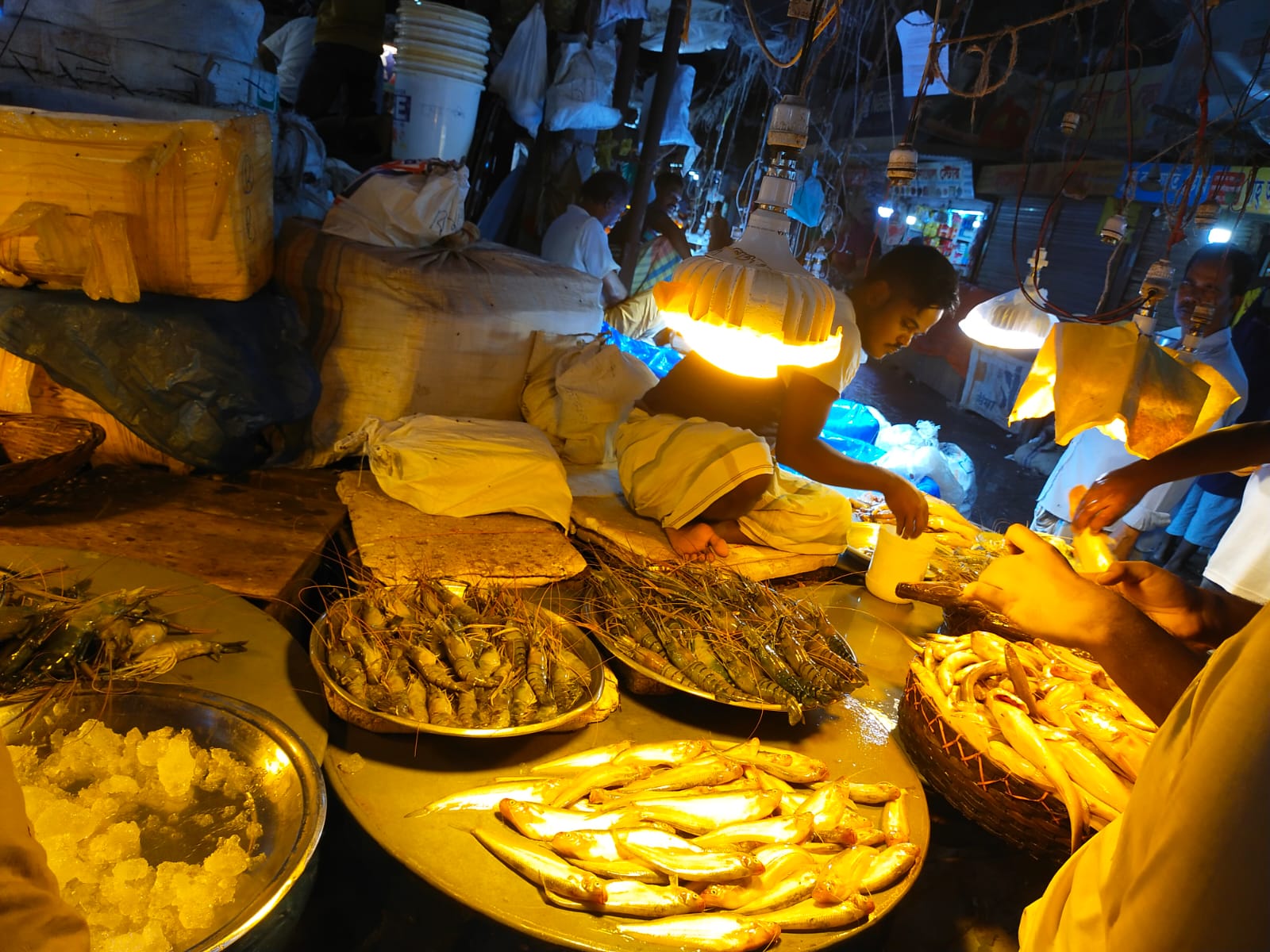
Photo : Different types of fish in Mirpur local fish market
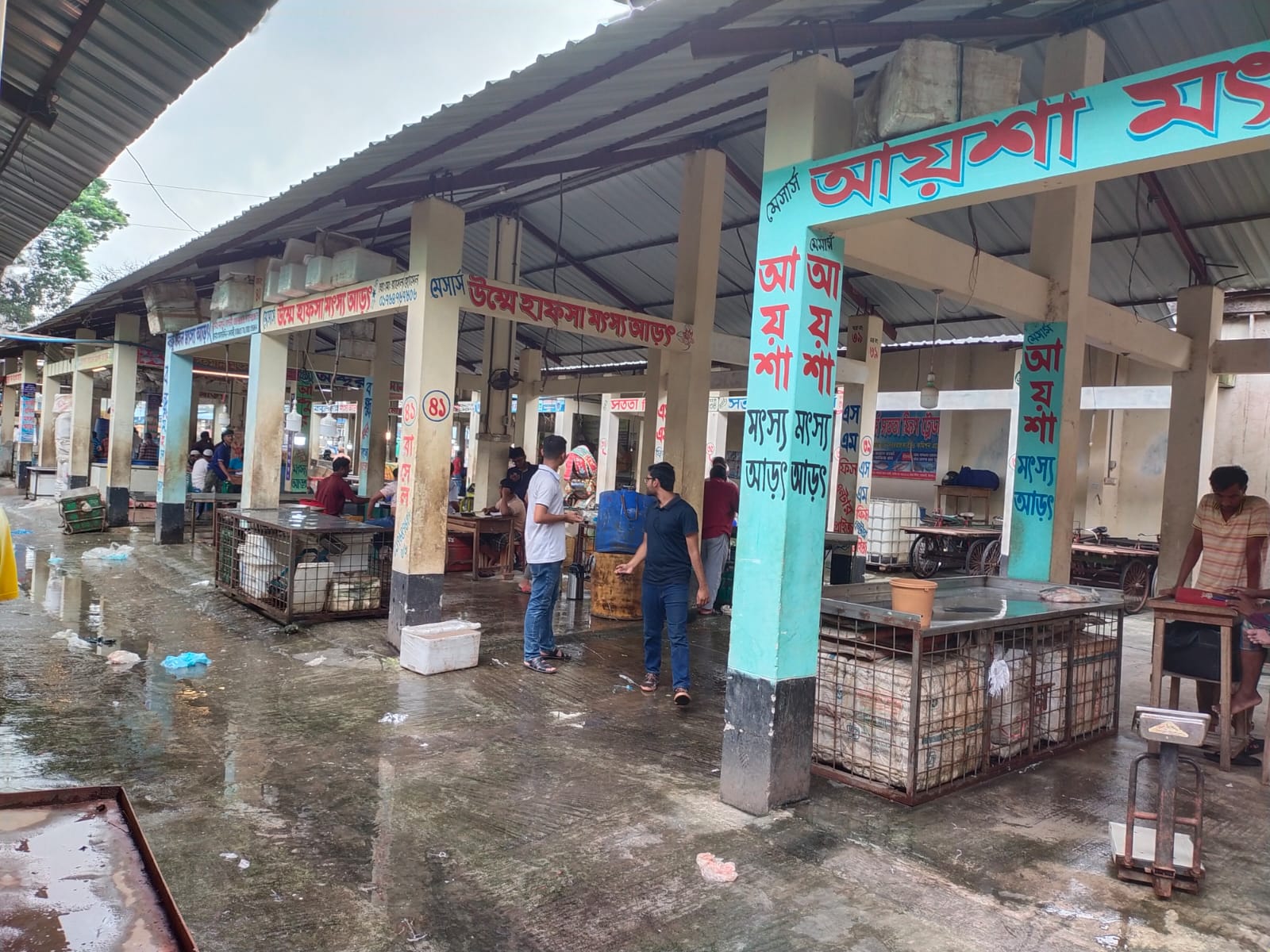
Photo : Diyabari fish arat
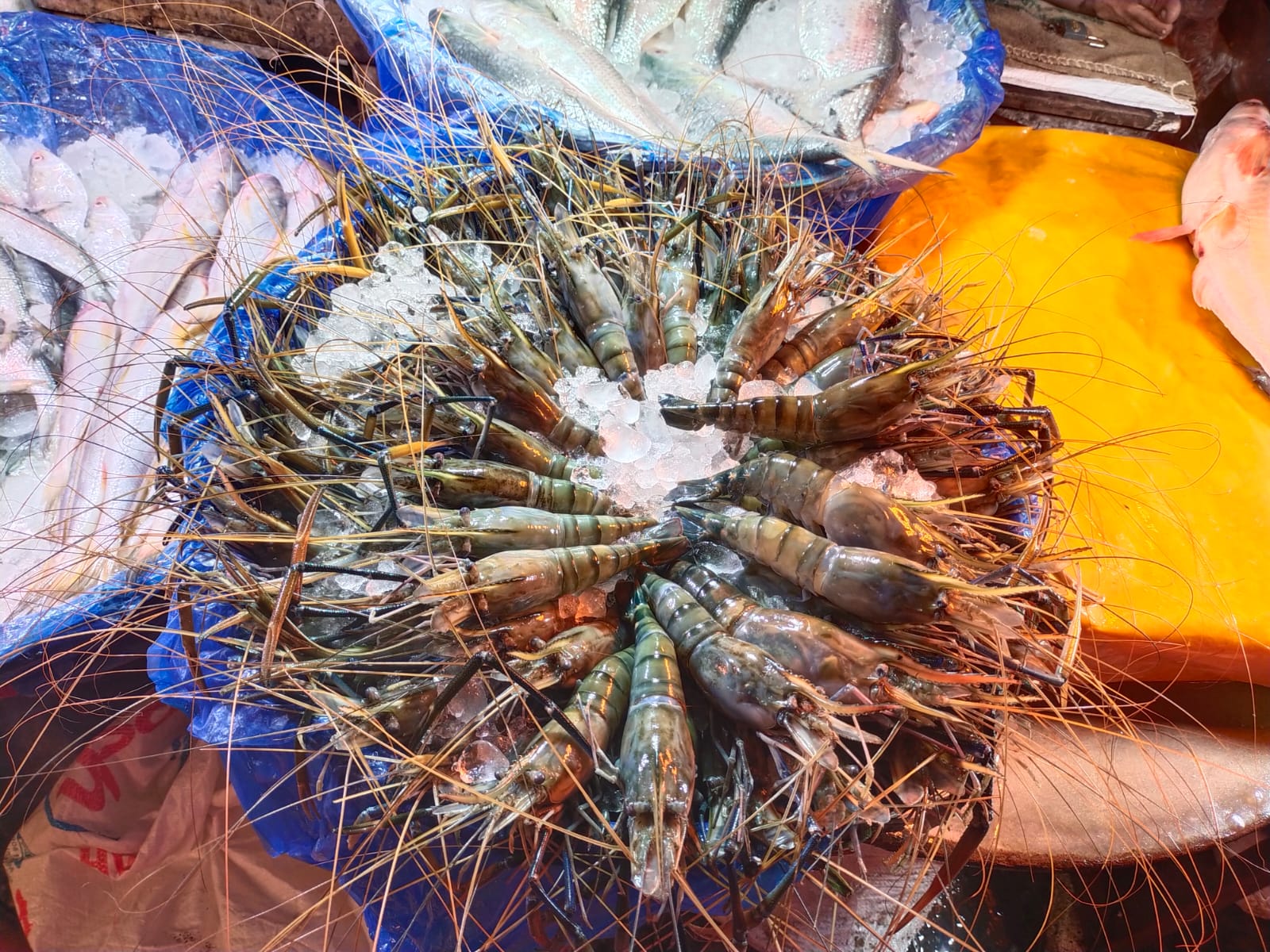
Photo: Prawn
Stakeholders’ Roleplay With Fish
Stakeholders means those people who are involved with fish, from the fishermen to the consumers. As per our collected data we found the marketing cycle of the fish. Fish come to the local market from the fishermen, beparies, mahajans, aratdars, wholesalers, retailers and lastly the consumers consume that fish.
Fish Distribution and Marketing Cycle :
Cycle 1:
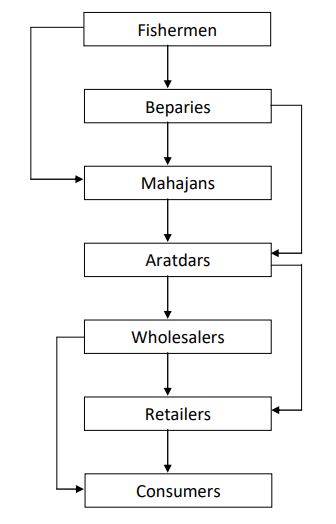
Cycle 2 :
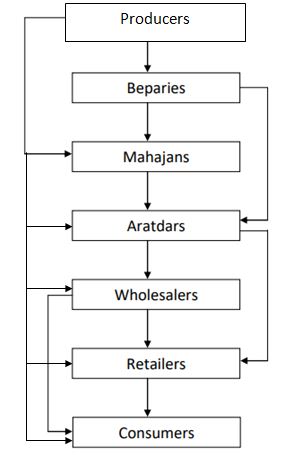
1. Fishermen’s Roleplay :
Fishermen are those who catches fish from the rivers or the seas. The fishermen take “Dadon” from the beparies or mahajans. Dadon is a particular amount of money that received by the fishermen for their livelihood. These fishermen do not catch fish all the year. So they don’t have money for their livelihood in the months they don’t catch fish. So they have to receive Dadon from the beparies or mahajans and have to give all the fish to the beparies or mahajans when they catch fish. Besides these fishermen also need money to operate their boats, trollers, ships, fishing nets or other equipments. That’s why they are bound to take dadon and give all the fish for a small amount of money. This is the reason why the fishermen are poor from the generation to generation. As per our data, the fishermen do not have connection to the aratdars, wholesalers or retailers.
2. Producer’s Roleplay :
Producers are those who produce or cultivate fish to their ponds or large fisheries. They are the businessmen and they are not poor people like the fishermen. After collecting fish from their ponds or fisheries, they sell it to anybody they want. As they never receive dadon, they are not bound to give all the fish to the beparies or mahajans. After collecting fish they usually sell their fish to the mahajans, if the amount is big. If the fish amount is medium, they sell the fish to the beparies. If the fish amount is small, they sell their fish to the wholesalers, retailers or consumers.
3. Beparies’ Roleplay :
Beparies are small businessmen compared to the mahajans. They provide small amount of dadon to the fishermen and receive all the fish caught by the fishermen in a particular time. The fishermen are bound to give all the fishes as they took money (dadon) from the beparies earlier. Beparies collect fish from the fishermen and sell them to the mahajans or aratdars where they get better profit. Normally they get the fish from the fishermen in a very low price but they those fishes to the mahajans or aratdars in a quite high price according to the market price and earn a handsome profit everyday.
4. Mahajans’ Roleplay :
The mahajans are the bigger businessmen compared to the beparies and their roleplay is quite similar to the beparies. They also provide dadon to the fishermen but in a large amount. The main difference between the beparies and the mahajans is, the mahajans have bigger network, large amount of manpower, large amount of seed money and they collect tons of fishes. They collect fishes from the fishermen as well as from the producers and transfer the fishes to the aratdars who are in the other cities. Sometimes they also collect fish from the beparies. Mahajans have manpower to monitor the fishermen who took dadon from the mahajan.
5. Aratdars’ Roleplay :
Aratdars are those who receive fish from the mahajans or beparies and sell them to the wholesalers or retailers and in exchange they take 3% commission from the mahajans or beparies. Normally they receive fish from the mahajans or beparies. They do not buy the fish. They just receive the fish and sell them to the wholesalers and retailers. After selling all the fish, they transfer the money to the mahajans’ or beparies’ bank account and they take 3% commission for that. In this case aratdars never loss in this business. Whatever the price or whatever the amount is, aratdars always take 3% commission. Mahajans or beparies collect fish from the remote villages of Bangladesh and send to the aratdars who are in the towns or cities where the consumers will consume that fish. Aratdars normally receive the fish from 5-6 AM in the morning and they almost sell all the fishes within 8 AM. Their main business is only 5-8 am in the morning. They have to pay monthly place rent or shop rent to the arat owners. Aratdars also have extra job or business.
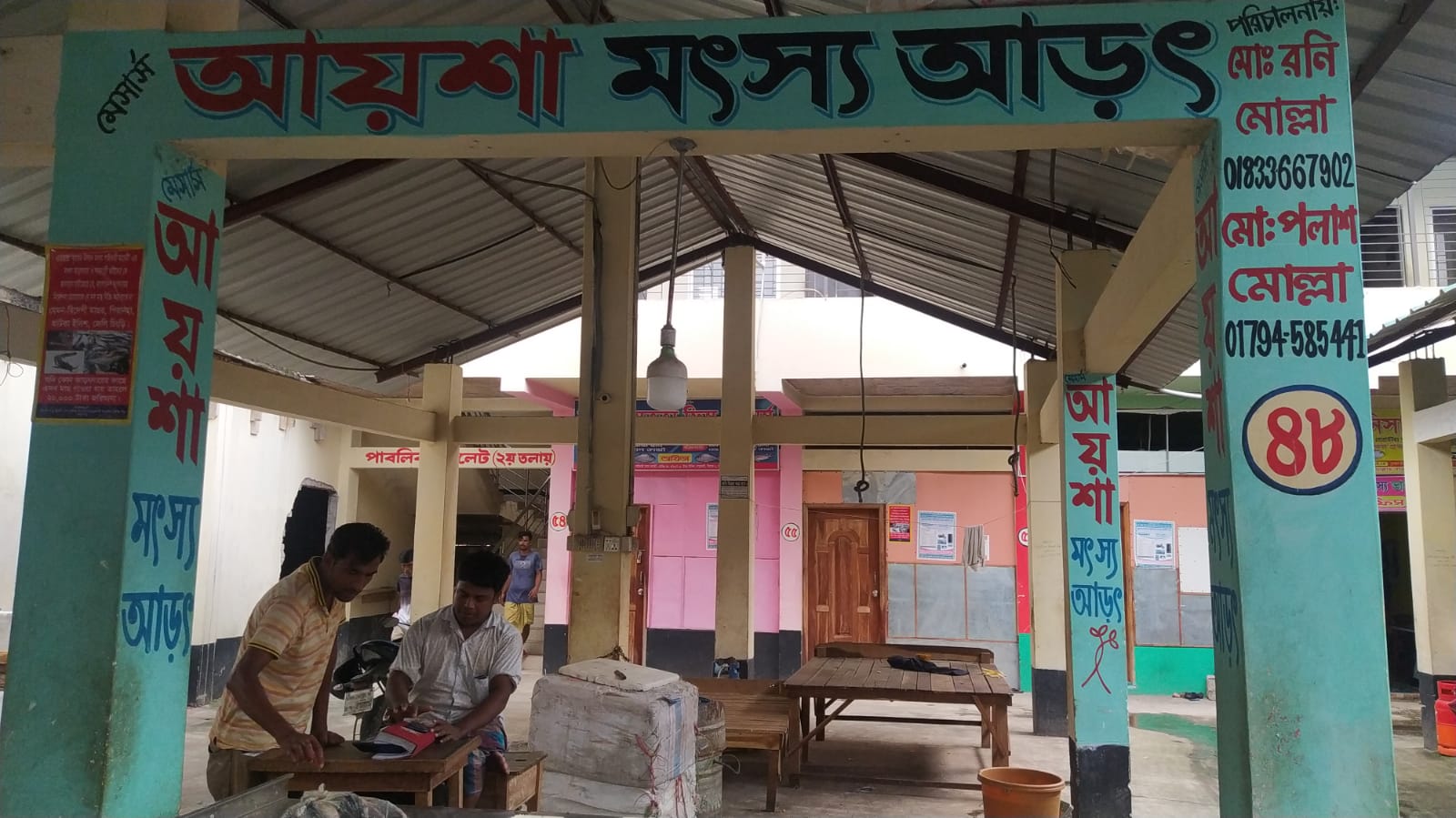
Photo : Arat and aratdars
6. Wholesalers’ Roleplay :
Wholesalers are those who buy fishes from the aratdars and sell them to the retailers and make a profit. Wholesalers are termed as “Paikers” in local language. Normally they do not sell fish directly to the consumers but in some cases they also act as retailers if they can not sell all the fish to the retailers bought from the aratdars.
7. Retailers’ Roleplay :
Retailers buy fish from the aratdars and wholesalers and sell them to the consumers. They have shop or place in the local grocery markets and there they arrange the fishes they bought from the aratdars or wholesalers and sell to the consumers all day long. As per our collected data, in Mirpur 1 local fish market, all the retailers sell in amount of 5,000 – 30,000 taka daily.
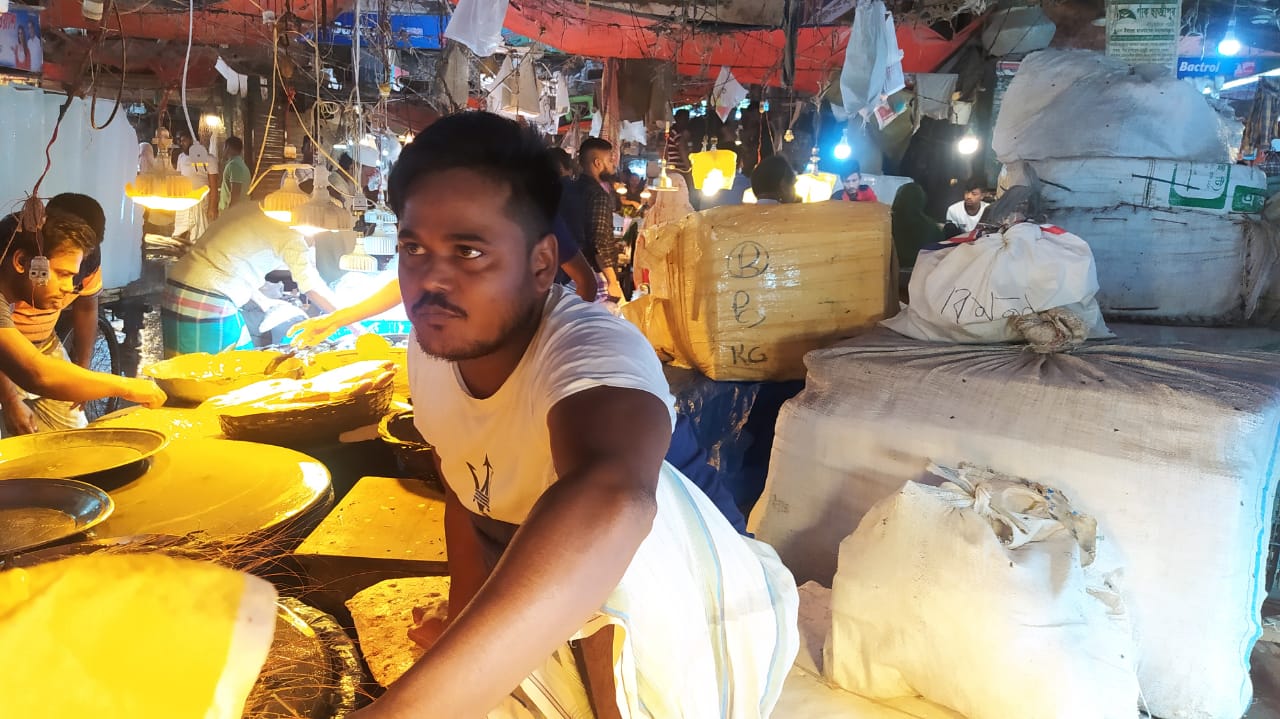
Photo : Fish retailer in Mirpur 1 local fish market.
8. Consumers’ Roleplay :
Consumers are those who take fish as food for the protein. Consumers come to the local markets and buy their preferable fish from the retailers of the market. Sometimes consumers buy fish from the wholesalers too if they need large amount of fish for any occasions.
Fish Market Structure
The actual and potential buyers describe about character of the structure of the market. It is the place where demand of a product exists. Traditionally places where buyers and sellers are brought together to buy or sell fish are referred as fish market. In Mirpur 1, total no of wholesaler and retailer is between 100 and 150 and over 50-80 peoples are act as Aratdar in Diyabari Fish Arat. Over 200 no of people also work with the traders as day laborers and they get Tk 1000 – 1500 per day for their work. This market is performed only for a few hours in the early morning where traders are involved in fish trading from 6 am to 9-10 am. From the other markets of the city, the fish trading system in the market is unusual to a certain extent. In the open place, fish is mainly traded here. Medium and large size fishes are separated from a mixed group by species and size and are sold in hali (4 pieces) basis and most small size fishes are sold in maund (37.6 kg) basis. Every trader has a fixed space for their business. There is no stalls for the traders but a few sheds are already exists. There are Electricity or telecommunication, preservation or freezing facilities.
Some Fish Found in the Mirpur 1 Local Market
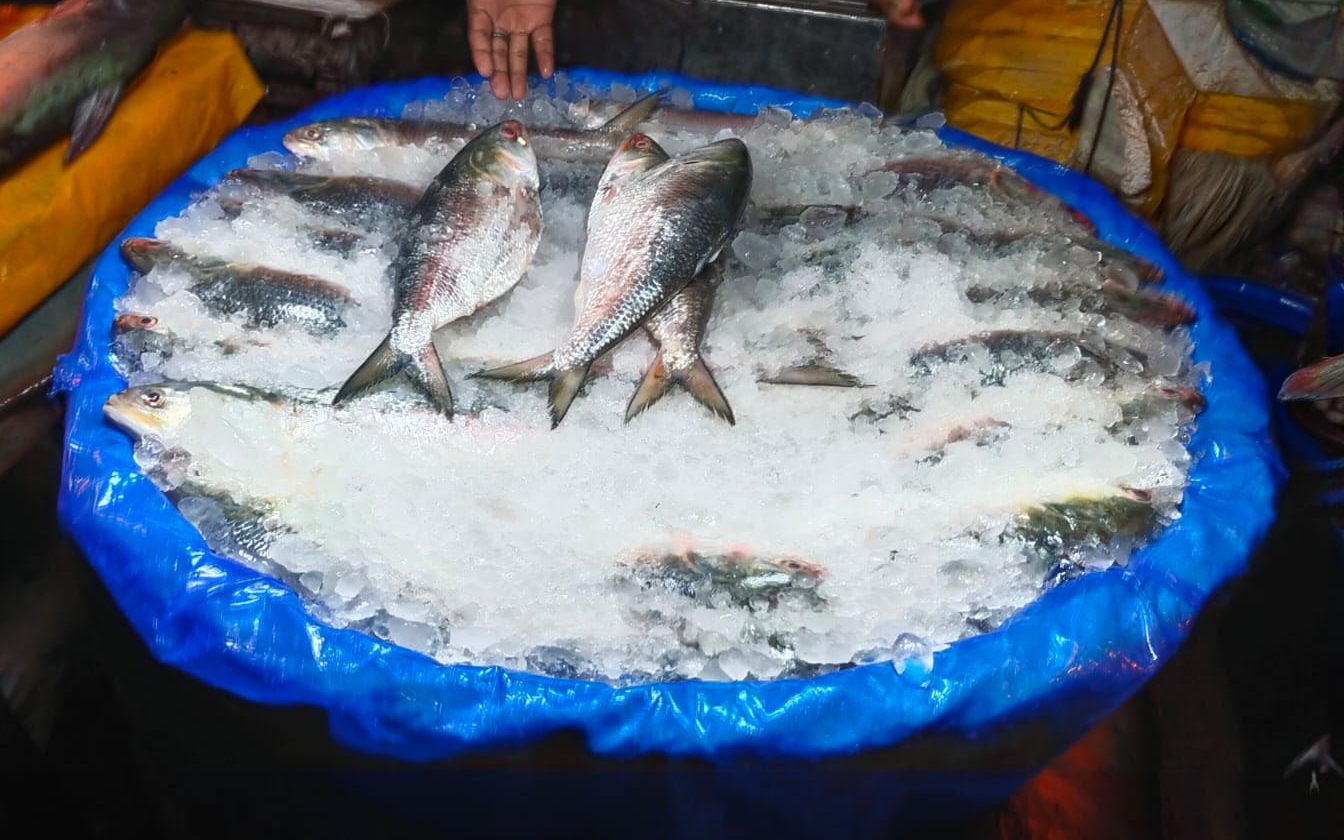
Photo : Hilsha fish
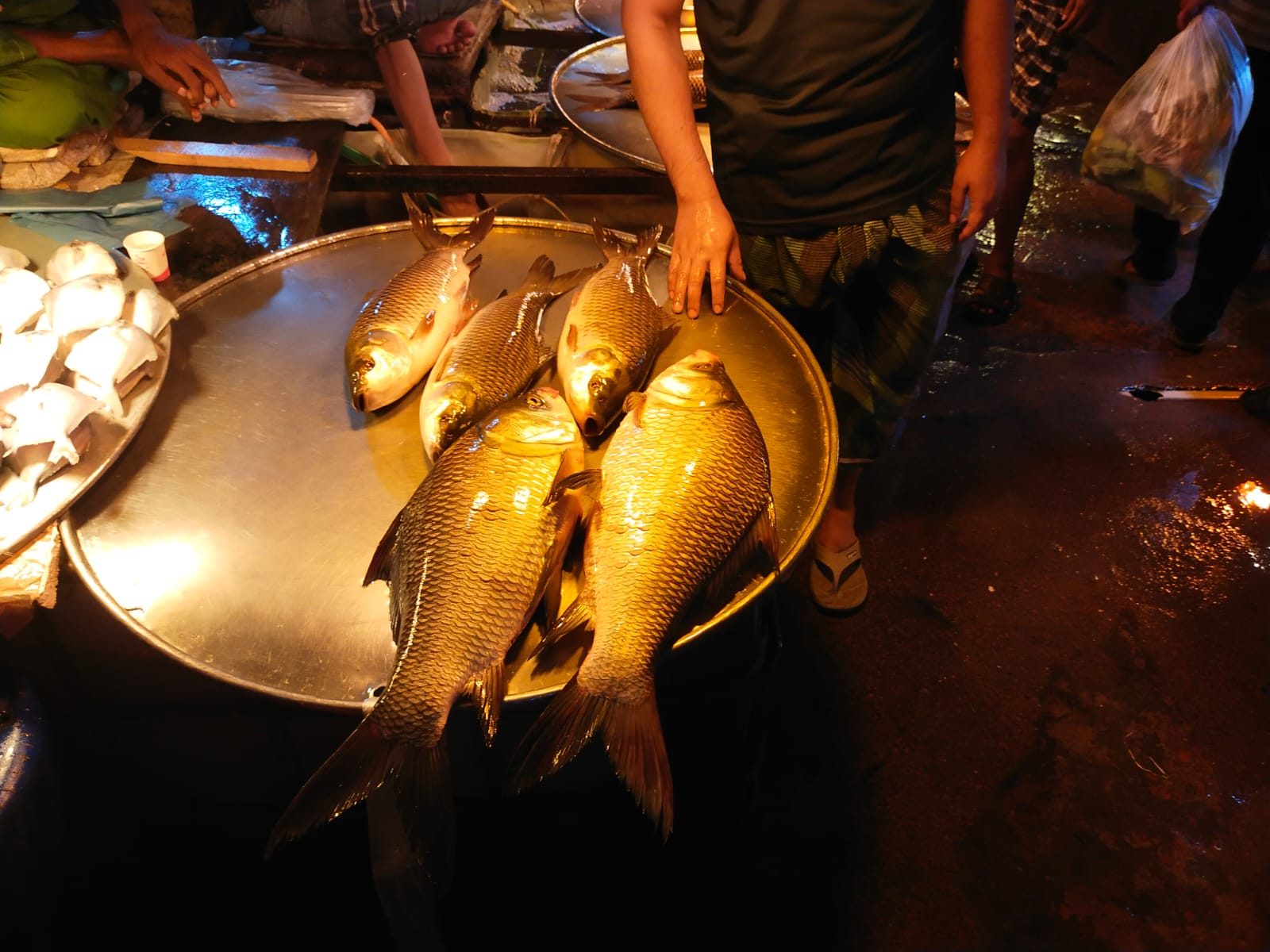
Photo : Rui and Catla
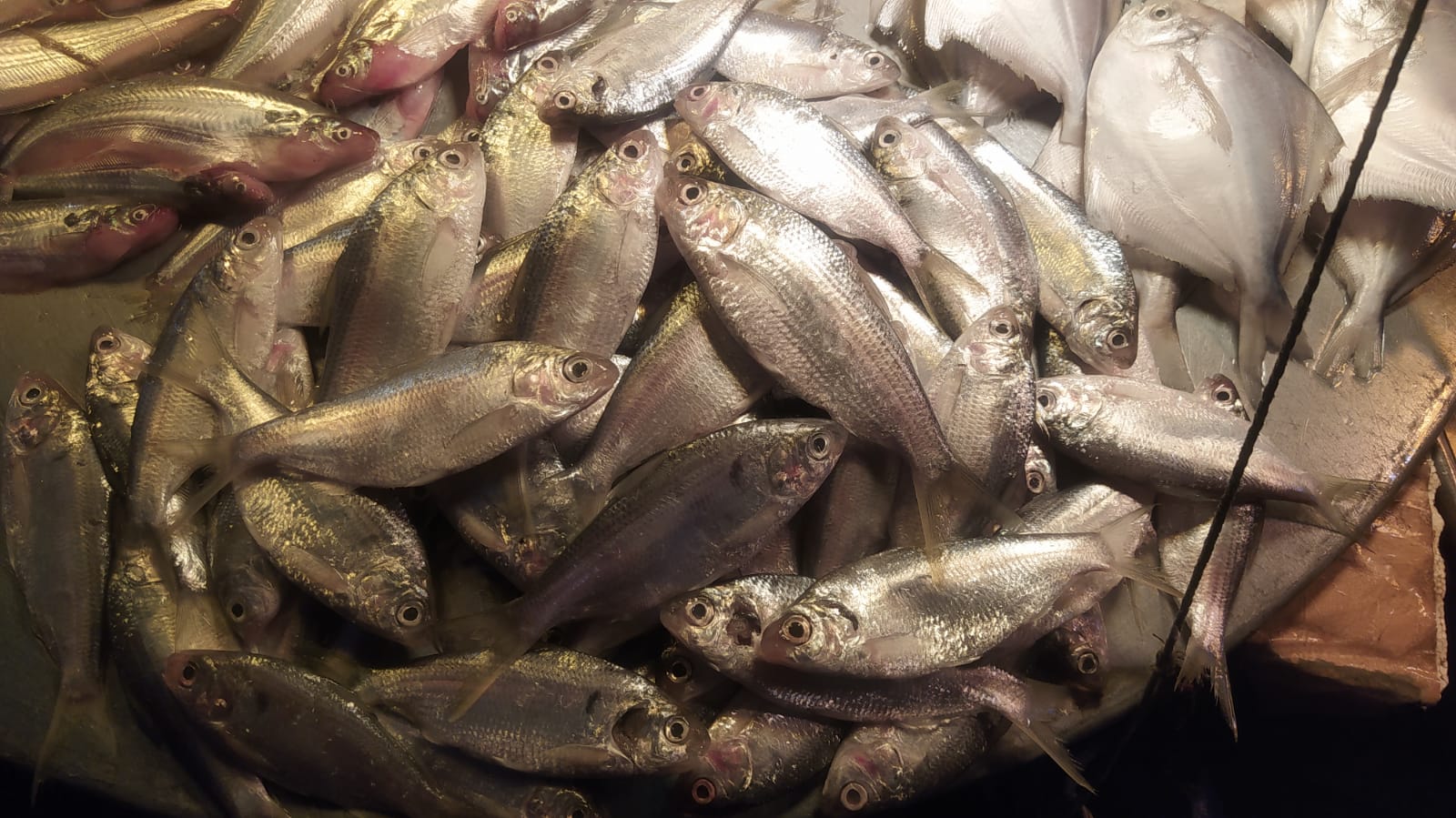
Photo : Indian River Shad
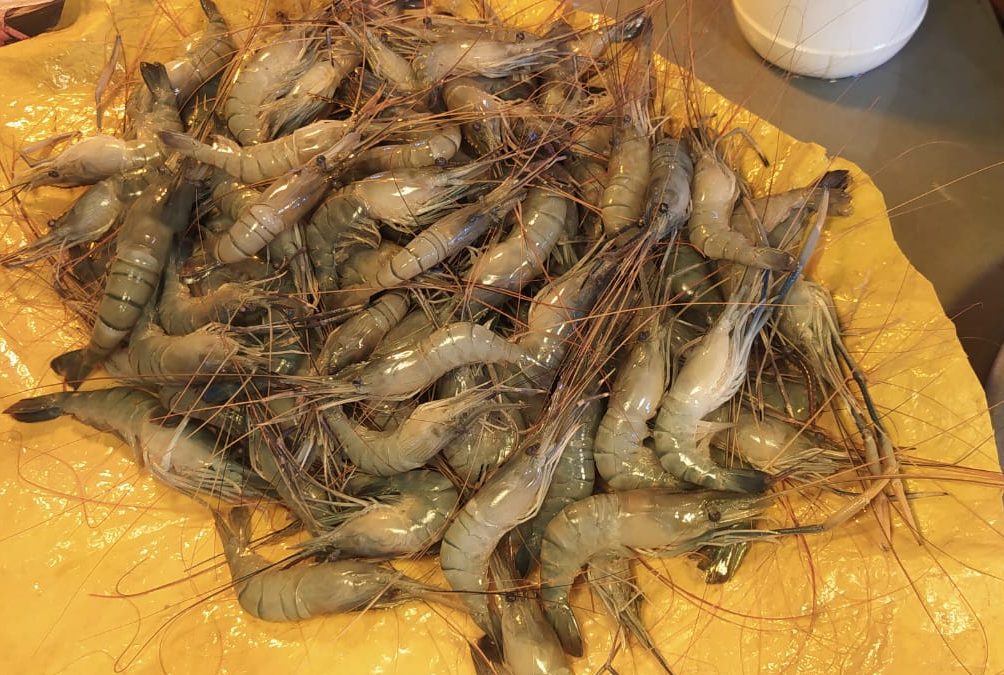
Photo : Prawn
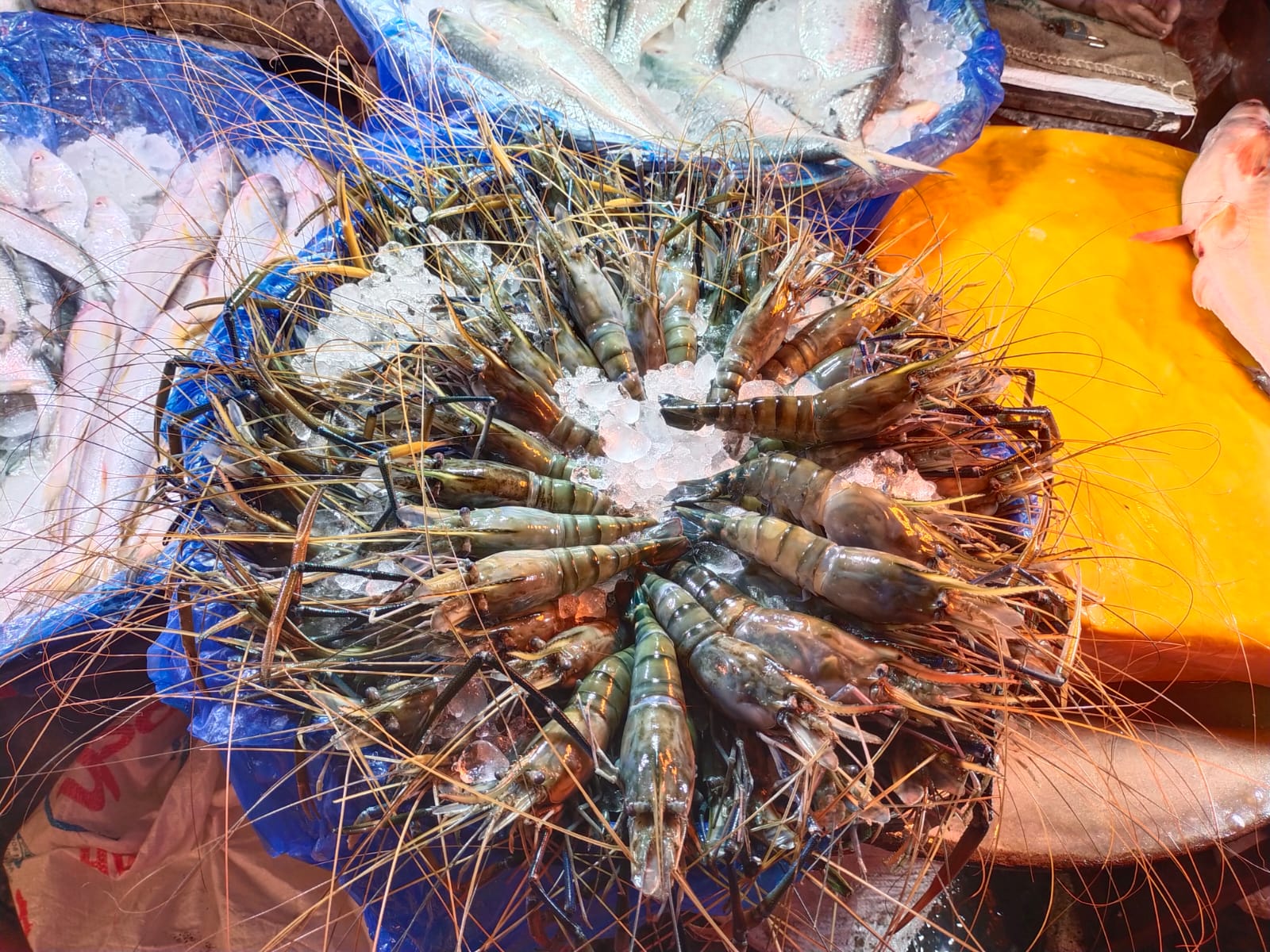
Photo : Prawn
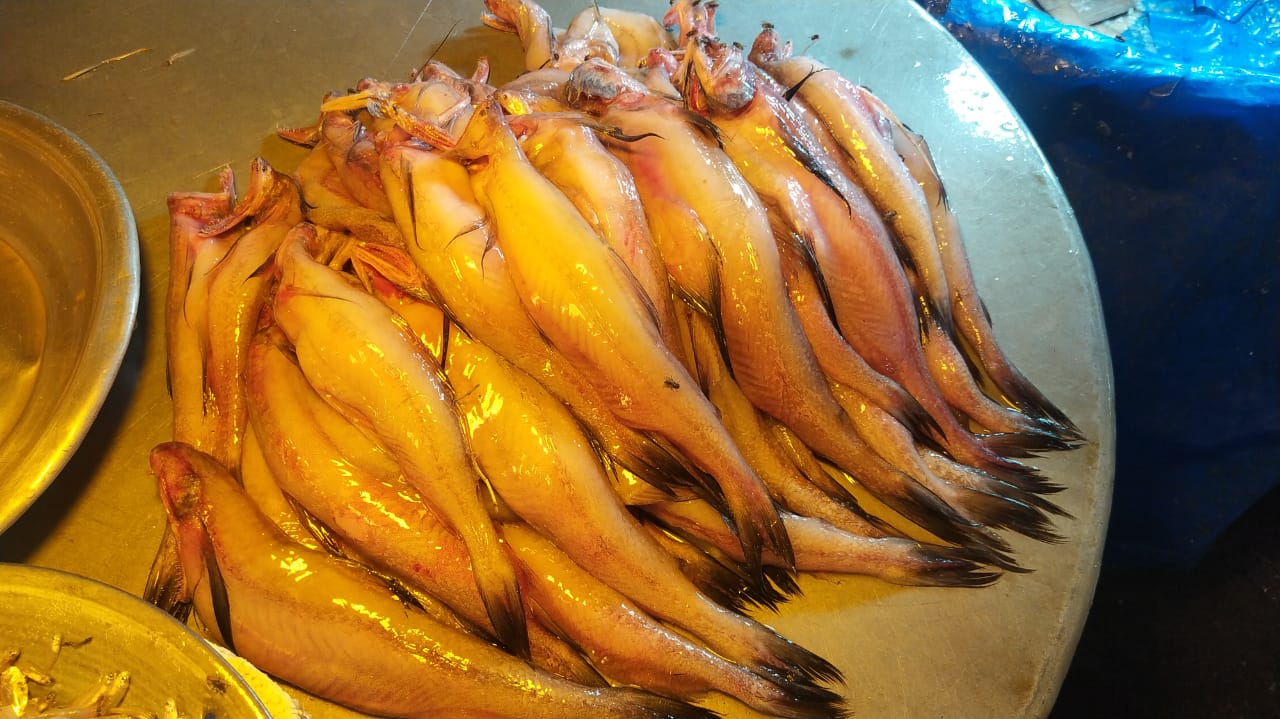
Photo : Loitta (Local name of BD)
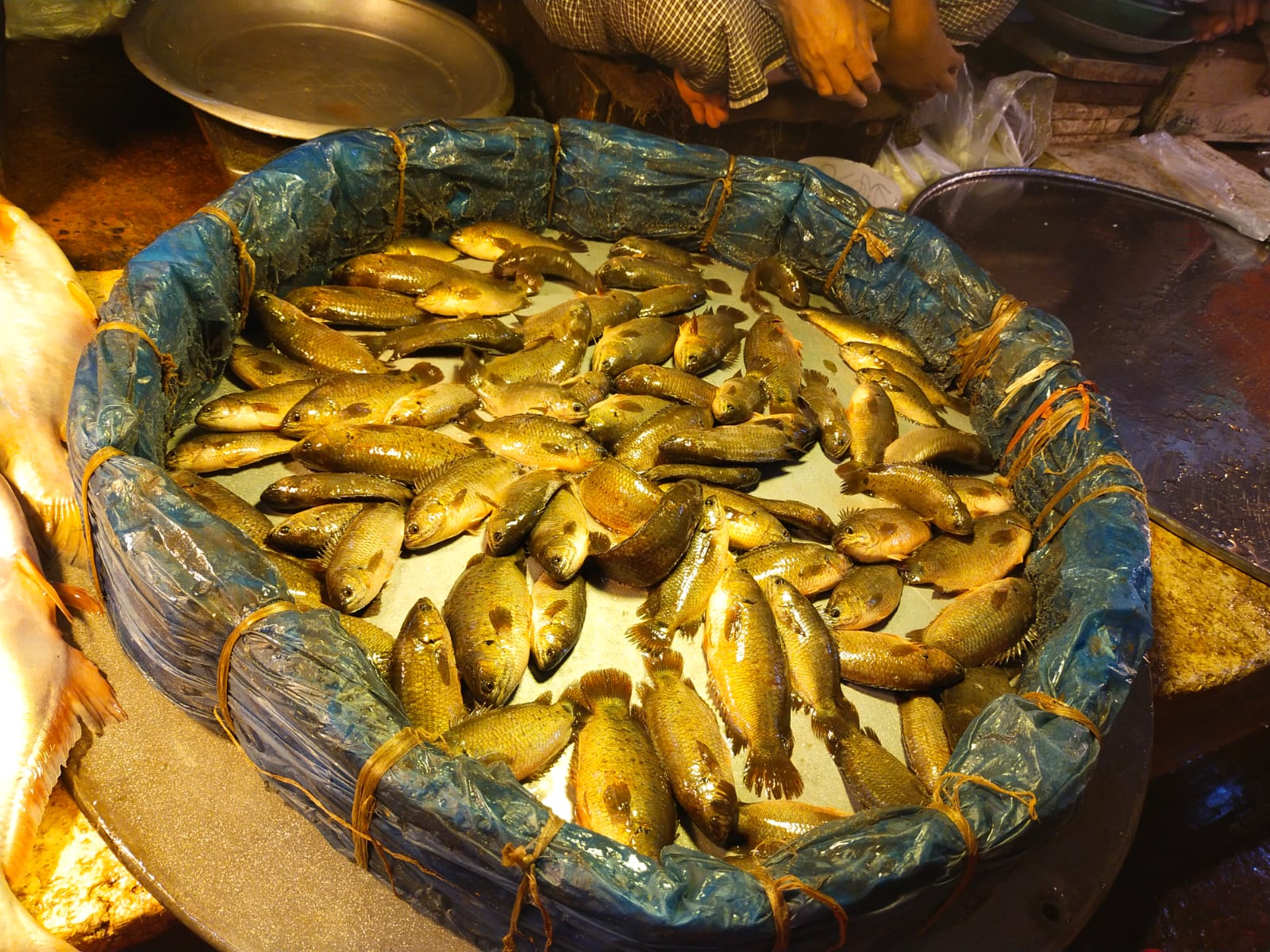
Photo : Climbing Perch
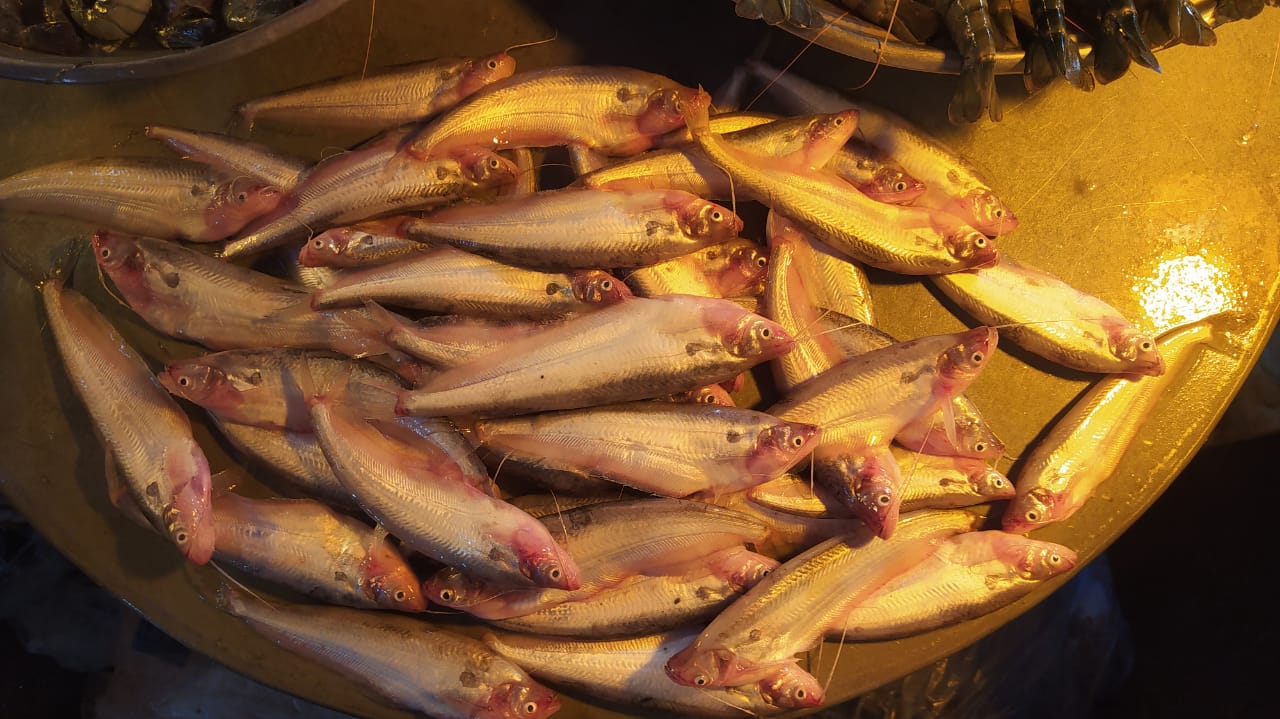
Photo : Pabdah catfish
Price of Fish
| Local Name | Common Name |
Price/kg (Tk) |
| Rui | Rohu or Rui | 350 |
| Katla/Katol | Catla | 360 |
| Pangus | Pangasius | 260 |
| Ilish (Small) | Hilsha | 750 |
| Ilish (Large) | Hilsha | 1100 |
| Chingri (Bagda) | Prawn (Bagda) | 950 |
| Marine Rupchada | Silver Pomfret | 500 |
| River Chapila | Indian River Shad | 400 |
| Pabda | Pabdah catfish | 400 |
| Boal | Wallago catfish | 650 |
Discussion
In Mirpur 1 local fish market, almost all kinds of fishes are traded internally move through the privet sector where a large number of people are dealing with fish distribution and marketing system. There are two types of marketing chain, one is for the fishermen who catches fish from the rivers or Bay of Bengal and the other chain is for the producers who produce fish in the ponds. For the first chain, the fishermen catches fish from the rivers and the Bay of Bengal, then these fish are collected by either beparies or mahajans. If the fish is collected by the beparies, they sell the fish to the mahajans. The mahajans distribute the fish to the aratdars of different cities. Aratdars collect the fish from the mahajans and sell them to the wholesellers or retailers. The consumers buy fish from the retailers. For the second chain, the producers, who produce fish in the ponds or fisheries, directly sell their fish to the mahajans or aratdars or wholesellers or retailers. The producers prefer the best profit margin but the fishermen are forced to sell their fish to the beparies or mahajans if they receive “dadon” from them. There are almost all kinds of marine, river or pond fishes are present in the local market of Mirpur 1 and the arat of Diyabari. Fish from south, west, north and north-east Bangladesh come here. It is estimated that near about 15% of fish supplied in markets is Indian major carps, 10% exotic carps, 5% other carps, 25% hilsa, 10% catfish, 5% snake-heads, 3%live-fish, 5% small indigenous fish, 7% prawn and shrimp, 5% tilapia and 10% others including small chingri and marine fishes. A great amount of profit is made by all traders in the market in a successful manner.
Reference
- P.S. Verma, A Manual of Practical Zoology Chordates, 10th Edition.
- Wikipedia
- A_Study_on_Fish_Marketing_System_in_Swarighat_Dhaka_Bangladesh
- FAO
Read More

Md Ekarm Hossain Bhuiyan is a dedicated zoology graduate with a profound passion for the study of animal life. He completed his primary and secondary education at Ispahani Public School and College, renowned for its commitment to academic excellence. He then pursued his secondary education at Government Science College. After that he achieved graduation at Department of Zoology, Jagannath University. His educational background and enthusiasm for zoology position him to make meaningful contributions to the field of biological sciences in Bangladesh.